Reviews
Dip huet seung hung
John Woo
Hong Kong, 1989
Credits
Review by David Carter
Posted on 25 July 2012
Source Dragon Dynasty/Weinstein Company BRD
Categories John Woo’s Hong Kong
The term “influential” is ever-present in discussions of the work of John Woo. His films had a profound effect not only on other Hong Kong filmmakers but also on American filmmakers such as Quentin Tarantino and Robert Rodriguez. It would be equally appropriate to refer to Woo’s cinema as “influenced,” however. Several of Woo’s early works contain direct references to American crime cinema, particularly the mafia films of the early seventies, and those films from the French New Wave that had themselves had been inspired by American films noir. Although dramatic gun fights and existentialist criminals were present in all of Woo’s films from the early eighties on, these elements were most readily present in his 1989 film The Killer, a loose remake of Jean-Pierre Melville’s Le Samouraï and a demonstration of the full palette of his influences.
The Killer opens with dapper hitman Ah Jong - “Jeff” in some dubbed versions in homage to Melville’s protagonist - waiting in an abandoned church to receive his latest assignment. His contact, Fung Sei, asks if Ah Jong’s choice of locale means that he is a religious man, but he replies that he simply likes the tranquility. Their short exchange is followed by Ah Jong’s slow-motion walk out of the church that segues to a sentimental piano ballad. It is in these brief introductory moments that the audience is given all of the information they will receive about the enigmatic Ah Jong, and Woo expertly uses the visuals to expand on ideas only touched on in the few lines of dialogue. Ah Jong is impeccably dressed in a three piece suit, complete with matching trench coat and hat and finished with a snow-white scarf. It is immediately evident that he is not the typical thuggish Triad assassin, that he is good enough at what he does to have obtained a measure of wealth, and there is a subtle hint that he does not consider what he does as being criminal.
The most important aspect of Ah Jong’s attire is the fact that it is antiquated. His wardrobe is modeled after fashions from the thirties and forties, and he would stand out in late-eighties’ Hong Kong in his old fashioned attire. Woo uses the outside to mirror the inside, and much of The Killer deals with conflict that arises from Ah Jong continuing to use older codes of honor that his contemporaries have abandoned. Ah Jong’s assignment is to eliminate a nightclub owner and during the hail of gunshots exchanged the club’s signer, Jennie, is blinded by Ah Jong’s muzzle flash. Ah Jong deeply regrets Jennie’s accident and begins protecting her and later encourages their romance, keeping his identity and responsibility for her condition a secret.
Ah Jong takes on a high-profile assassination in order to pay for the surgery to restore Jennie’s eyesight. He stops to save a child injured during his shoot-out with police, leading to his identification by the lead detective, Li Ying. Li and the police begin a massive manhunt for Ah Jong, who is now also on the run from his Triad employers, who want him dead before he is arrested. After a few near misses with both the police and the Triads, Ah Jong joins forces with Li Ying when the latter realizes that they are not too dissimilar. Ah Jong, Li Ying, and Jennie eventually find themselves cornered in the abandoned church, besieged by the full force of the Triad in a spectacular action sequence that occupies the final third of the film.
The Christian iconography bookending the film hints to the film’s underlying theme of noble sacrifice. Ah Jong risks his life to save Jennie and the small child because, unlike his fellow gangsters, he believes protecting innocents is more important than money or revenge. One of the film’s more touching aspects is a detail that goes unmentioned in the narrative but will be evident to viewers: Ah Jong is willing to sacrifice his relationship with Jennie to restore her sight, as once she’s able to see she’ll know he’s responsible for blinding her and that he’s been deceiving her. Woo uses this to demonstrate that Ah Jong is not simply acting out of guilt, but out of a genuine concern for other people. Later in the film, Li Yang sacrifices his police career and Fung Sei sacrifices his life to aid Ah Jong, both realizing that he is the last just man in Hong Kong regardless of what his profession may be.
The action sequences in The Killer are among the most spectacular Woo ever filmed, and the success of the film catapulted him to international renown. The film’s lasting appeal is due to the fact that it is ultimately a film about relationships, however, not bullets. The argument has been made in some corners that Woo’s cinema glorifies violence, but that assertion isn’t tenable for a film like The Killer. Ah Jong is not the film’s hero because he is an unstoppable killing machine with impeccable aim, but because he’s a decent person, someone who cares about his friends and is willing to make sacrifices for others. Indeed, Ah Jong is a true cinematic “good guy,” a marked contrast the anti-heroes filling the action films of other nations during the late eighties. Thus, we root for Ah Jong to win without reservation, and we feel his pain when he fails. The film’s final moments are touching in way rarely seen in action cinema. The Killer’s gun battles have been imitated, expanded, and surpassed numerous times since its release, yet it could be argued that no action film has come close to matching the film’s emotional depth.
More John Woo’s Hong Kong
-
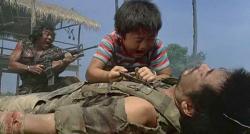
Heroes Shed No Tears
1986 -
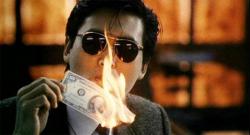
A Better Tomorrow
1986 -
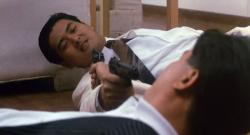
The Killer
1989 -
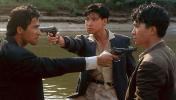
Bullet in the Head
1990 -
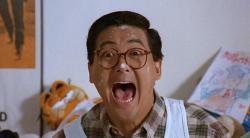
Once a Thief
1991 -
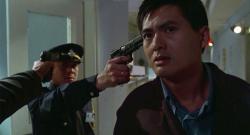
Hard Boiled
1992
We don’t do comments anymore, but you may contact us here or find us on Twitter or Facebook.



